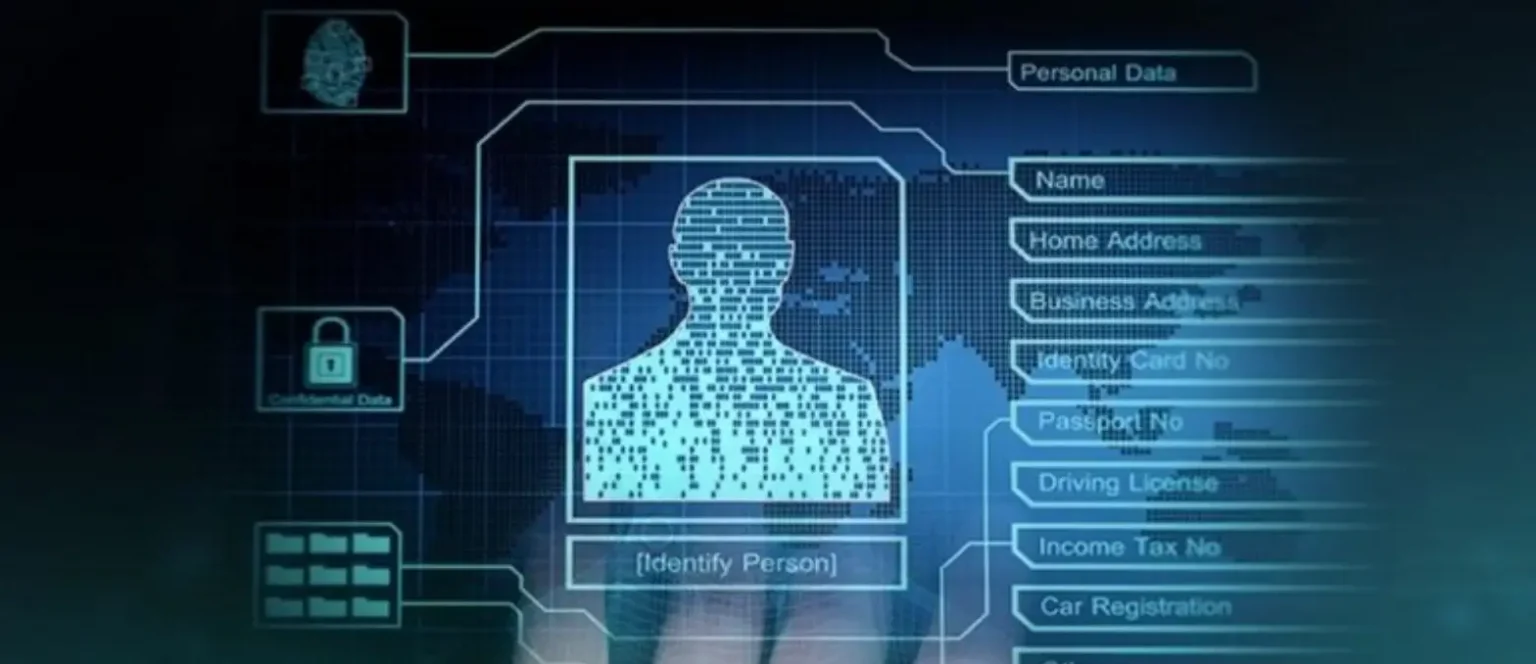Payment apps like Cash App, Venmo, and PayPal have seen huge growth in recent years by making money transfers simple, convenient, and often free. If you want to build your peer-to-peer payment app, there are key considerations to keep in mind from defining features and UX, and choosing the right technology stack. It also includes integrating with payment gateways, prioritizing security, and launching effectively. Following best practices by a top mobile application developer in the USA can help you develop a successful payment app that people love to use.
Table of Contents
Overview of payment apps like Cash App
Payment apps like Cash App, Venmo, and PayPal allow users to easily send and receive money from other users. These apps make transferring money faster, more convenient and often free.
Cash App is a payment service provided by Square Inc. The app allows users to send money to other Cash App users by entering their username or phone number. For added security, transfers require the recipient’s confirmation through the app. The interface is also intuitive with simple tabs for sending, requesting and receiving money.
There are no fees for sending money to other Cash App users. However, a fee may apply for transferring money to a bank account or debit card not linked to Cash App. The app also allows users to invest in stocks and bitcoin from within the app.
Easy to use and free for most money transfers between users, payment apps help avoid the hassle and fees associated with traditional methods of sending money, like cash, checks, or money orders. So, it is also important to create strong passwords, keep software updated, and only link trusted bank accounts.
The growing popularity of peer-to-peer payment apps
Peer-to-peer payment apps like Venmo, Cash App, and PayPal have exploded in popularity in recent years. These apps allow people to easily send and receive money from friends, family, and others. There are a few reasons for their growing use.
First, peer-to-peer payment apps provide a simple and convenient experience. Users can transfer money with just a few taps on their smartphones. This ease of use has drawn in younger generations who have largely abandoned cash, checks, and money orders.
Second, many of these apps are free for personal transfers between users. This helps encourage people to use the apps more frequently for small payments like splitting a dinner bill or paying a friend back.
Third, the social features of some apps make money transfers more fun. Venmo, for example, allows users to publicly post payments on a feed that friends can see. This has turned money transfers into a bit of a game.
However, security and privacy concerns remain for some users. Information like who someone pays and how much can be publicly visible. And some peer-to-peer payment apps have experienced data breaches and fraud in the past.
Still, the popularity of these peer-to-peer payment apps continues to grow as they provide a fast, free, and simple way to split bills, pay friends back and manage group donations and fundraising – replacing the clunky methods that existed before.
The target audience for payment apps and their needs
Payment apps like Cash App target a broad audience but especially appeal to younger generations that have grown up with smartphones. These users are comfortable with technology and value the convenience of making payments from their phones.
For millennials and Gen Z, peer-to-peer payment apps meet several core needs. First, they provide an easy way to split costs like restaurant bills, vacations, shared apartment expenses, and group gifts. Younger people frequently exchange small amounts of money with friends, so simplicity is key. Traditional methods like cash, checks, and bank transfers are time-consuming and annoying for dividing bills among groups.
Second, payment apps satisfy the desire to quickly and easily pay friends back. Many millennials and Gen Zs routinely lend each other small amounts, so a fast and frictionless repayment process is important. They avoid the hassle of exchanging cash or writing physical checks for small debts.
Third, payment apps fulfill a demand for transparency around money transfers between friends and within groups. Some apps feature a social feed where payments are publicly posted, satisfying the desire for openness. While meeting needs for convenience and transparency, apps must also fulfill requirements for security, privacy, customer support, and protection from fraud. As personal finances increasingly move online, younger users rightly expect strong data safeguards, responsive assistance, and fraud monitoring.
Overall, payment apps fill important needs for ease, speed, and transparency that resonate with smartphone-savvy younger audiences. Millennials and Gen Z value the ability to instantly split bills, pay friends back and manage group donations – tasks that traditional methods make difficult. But security, privacy safeguards, and quality customer service remain essential to gain and maintain users’ trust over time. Younger users also may demand these features most of all as they share more financial details through payment apps.
Competitors in the peer-to-peer payment market
The peer-to-peer payment market is growing rapidly, driven by the popularity of apps that make money transfers simple, convenient, and often free. Venmo, PayPal, Cash App, and Zelle are the main competitors in this space, battling for users and transactions.
Venmo, owned by PayPal, was one of the earliest peer-to-peer payment apps to gain widespread adoption. Its social features and integration with platforms like Instagram helped make it popular with millennials and Gen Z. However, its focus is mainly on small personal transfers between individuals.
PayPal itself offers peer-to-peer payments through its core app and website. With over 350 million active users globally, PayPal has a huge built-in network for money transfers. While less social than Venmo, PayPal caters to both individuals and businesses.
Square’s Cash App has seen rapid growth recently. Unlike Venmo and PayPal, Cash App is designed more like a bank account within an app, allowing users to deposit and withdraw money, spend using a Visa debit card, and invest in stocks and bitcoin. This broader feature set appeals to a wider range of customers.
Zelle, owned by several large banks, differentiates itself as being bank-centric rather than a standalone app. While less feature-rich than competitors, Zelle promises security through integration with users’ banks.
All of these payment apps compete on convenience, speed, cost, and security. But each has its strengths – Venmo and PayPal leverage large networks and social features; Cash App provides broader financial and mobile app development services; and Zelle ties into existing bank relationships. Over time, the peer-to-peer payments space is likely to consolidate as apps expand their features and acquire one another. For now, the variety of approaches and differentiated focuses among competitors drive innovation in this growing market.
Steps to build a payment app Like Cash App
There are many steps involved in building a successful payment app like Cash App. The process requires attention to both the user experience and technical implementation. Following best practices at each stage can set your app up for success. The key steps include-
Defining App Features and Functionality
When developing a successful payment app, it is important to start by clearly defining the core features and functionality the app will offer. This upfront planning lays the foundation for building an app that meets users’ needs and competes effectively in the market.
Some key questions to be asked by a top mobile application developer in the USA during this definition phase include:
- What are the primary payment and money transfer capabilities the app will provide? Will it focus mainly on peer-to-peer transfers or also support payments to businesses?
- What additional financial features will the app offer, if any? Examples include capabilities like bill pay, budgeting tools, investing, and mobile app development services.
- Will the app have a social or game-like element to engage users beyond basic payments? If so, how will this work?
- How secure will transactions be?
- How easy and intuitive will the app be to use? Will onboarding be simple or require extra verification steps?
- How will the app differentiate from competitors? What value or strengths will set it apart?
Properly defining these app features upfront allows top mobile app developers in the USA to design an experience that precisely targets a specific audience and needs. This clarity of purpose helps guide decisions around the app’s interface, workflows, and integrations with external services.
Once key features and functionality are defined, a roadmap can be created outlining the initial app release as well as planned future enhancements. This roadmap by a mobile app development company in the USA helps align the development team, guide resource allocation, and set expectations with investors or stakeholders.
User Experience Design
When developing a successful payment app, user experience design is essential. The UX design process involves carefully thinking through every detail of how users will interact with the app and accomplish their tasks and goals.
Some key aspects of UX design for payment apps include:
- Simplicity – The app must make payments and transfers as simple and intuitive as possible.
- Visual Design – The app’s colors, layout, typography, and graphics must come together to create an aesthetic that feels modern, trustworthy, and tailored to the target audience.
- Information Architecture – Data and features need to be organized logically within intuitive tabs, sections, and menus. In-app help and tooltips can guide users through complex processes.
- Interaction Design – Touch gestures, buttons, forms, and other interactive elements should be designed to minimize clicks and taps while still maintaining security.
- Feedback and Error Handling – Errors and warnings should be communicated to users with simple language and visual indicators. Help text can guide users to resolve issues.
- Testing – Early testing with representative users is critical to identify and correct UX issues before a wider release. Iterative testing and improvements should continue post-launch.
Throughout the UX design process, the user remains the central focus. Designers ask questions like: Will users understand how to make their first payment? What confuses them? What frustrates them? How can the experience be improved? By approaching design through the user’s perspective and needs, the resulting app is more intuitive to use and more successful at achieving its purpose of facilitating easy and secure payments. UX enhancements by a top mobile application developer in the USA can also be planned to improve the app over time based on user feedback.
Technology Stack and Infrastructure
The technology stack and infrastructure behind a payment app are crucial to its success. They determine the app’s performance, security, reliability, and ability to scale. When developing a payment app, top mobile app developers must choose the right:
- Programming Language – Common options are Java, Kotlin, Swift, and Objective-C for iOS apps and Java/Kotlin for Android. The language affects code maintainability, developer tools, and performance.
- Framework – Frameworks like React Native, Flutter, or native SDKs ease app development. They handle tasks like UI rendering, database integration, and network requests.
- Database – A robust database is needed to store user accounts, payment details, transactions, and other data. Options include SQL, NoSQL, and cloud-based options.
- Security Protocols – Payment apps by a mobile app development company in the USA must utilize encryption, tokenization, and authentication to protect sensitive data while in transit and at rest. SSL/TLS, AES cryptography, and two-factor authentication are common.
- Payment Processor – An API integration enables the app to transfer funds. Processors handle compliance, taxation, and fund disbursement.
- Cloud Services – Cloud services like AWS, Google Cloud, and Azure offer scalable and reliable cloud hosting, as well as features like notifications, fraud detection, and more.
- Infrastructure – Virtual servers, containerization, load balancers, caching, and CDNs ensure app performance, scalability, and uptime under heavy loads.
- Testing Tools – Everything from unit and API testing to UI testing and security audits are needed by the best mobile app development company to identify issues before launch.
The right technology stack enables key capabilities for payment apps like high transaction volumes, fast load times, geographically distributed users, and 24/7 availability. It also ensures compliance with PCI DSS security standards that apply to handling sensitive payment data.
Payment Gateway Integration
Integrating a payment gateway is essential for payment apps to process transactions and transfer funds. The payment gateway acts as a middleware between the app and banking/credit card networks. Some key functions of a payment gateway in payment app development are:
- Connecting to Major Card Brands – The gateway allows the app to interface with Visa, Mastercard, American Express, and other major payment networks.
- Handling Sensitive Data – The gateway securely stores users’ bank account and card details, minimizing the need to store this data within the app itself.
- Processing Transactions – When a payment is initiated in the app, the gateway processes the transaction by connecting to the appropriate banking or card network.
- Managing Compliance – A mobile app development company in the USA ensures all transactions comply with PCI DSS security standards, data protection laws, and other relevant regulations.
- Providing APIs – APIs allow the app to securely communicate payment instructions to the gateway and receive processing responses. This enables a smooth user experience.
- Offering Additional Features – Many gateways provide value-added features like fraud detection, recurring billing, refunds, reporting, and more.
- Scaling to Handle Volume – The gateway infrastructure is also designed to scale to handle the transaction volume of even the largest payment apps.
Choosing a payment gateway that provides stable APIs, robust features, high uptime, advanced security, and scalability helps ensure the success of a payment app. The gateway essentially acts as the bridge that turns an app into a fully functional system for processing financial transactions. So, during development, time should be invested in thoroughly evaluating possible gateways, testing their APIs, understanding their capabilities and limitations, and planning for their integration.
Security and Privacy Measures
Security and privacy are paramount for any payment app. Users need to trust that their sensitive financial information and transactions will be properly safeguarded. This requires implementing robust security and privacy measures throughout the app development process. Some key areas to focus on include:
- Secure Data Storage – Using encryption to store all sensitive data like credit card numbers, bank details, and transaction history. This includes data stored in databases, logs, and backups.
- Secure Transmission – Utilizing HTTPS/SSL to securely transmit all data sent to and from the app’s servers.
- Authentication – Requiring strong user passwords and implementing two-factor authentication to confirm users’ identities before processing transactions.
- Authorization – Restricting what data and actions different user types can access within the app based on strict permissions.
- Encrypted Messaging – Employing encryption for all internal app communications by the best mobile app development company to prevent data interception within the app’s infrastructure.
- Penetration Testing – Conducting security audits and penetration testing during development to identify and fix vulnerabilities before launch. This should continue periodically post-launch.
- Incident Response Planning – Creating a protocol with the help of a top mobile application developer for how security breaches, fraud, and other incidents will be investigated and resolved, as well as how users will be notified.
- Privacy Policy – Implementing a fully transparent, easy-to-understand privacy policy that details exactly what data is collected, why it’s needed, and how users can manage their data and delete accounts.
- Regulatory Compliance – Ensuring the app and all data handling comply with relevant security and privacy laws like GDPR, CCPA, PCI DSS, and more.
So, security and privacy must also be “baked in” from the start of development and continually improved over time.
Testing and Quality Assurance
Testing and Quality Assurance is a fundamental step in developing a secure payment app. Without comprehensive testing, even the smallest oversight could compromise users’ financial and personal information. The testing process should include:
- Unit Testing – Each function, class, and module within the app should be individually tested to ensure they work as intended. Unit tests verify the basic functionality of app components in isolation. This catches problems early in development.
- Integration Testing – After unit testing, integrated testing checks how different components work together. This tests things like APIs, interfaces between modules, and external integrations. It verifies that components interact as designed with no issues.
- Usability Testing – Involving users early to determine if the user interface and user experience achieve their goals. Testers perform tasks to identify any issues, confusion, clicks or navigation problems. This improves the app’s ease of use and adoption.
- Security Testing – Subjecting the app to multiple attacks to identify potential vulnerabilities. Penetration testing, vulnerability scanning, and fuzz testing are conducted to find issues like SQL injection, man-in-the-middle attacks, session hijacking, etc. Any issues are then fixed before release.
- Load and Performance Testing – Simulating real-world usage to determine how the app performs and scales. Performance is tested under high loads to identify bottlenecks or degradation in uptime and response times. Tuning is done to ensure the app can handle peaks in traffic.
Launch and Deployment
The launch and deployment of a payment app is a major milestone that requires careful planning and execution. How an app launches can significantly impact its early success. Some key aspects of a successful payment app launch include:
- Limited Release – Initially releasing the app to a small group of testers, family/friends, or employees to identify any critical bugs or issues before a wider rollout. This reduces risk.
- Staged Rollout – Gradually expanding the availability of the app to more users and geographies over time instead of launching to everyone at once.
- Contingency Planning – Creating backup plans for how transaction failures, security threats, and other issues will be addressed during the launch period. User communication strategies are also planned.
- Infrastructure Readiness – Ensuring all aspects of the app’s technology stack and hosting infrastructure are properly sized, configured, and monitored to handle the initial load of users.
- Partner Onboarding – Allowing enough time for any third-party integrations like payment processors and bank APIs to formally bring the app into their systems before launch.
- Marketing Campaign – Coordinating any marketing, social media, or referral programs with the timing of the app release to effectively spread the word and acquire initial users.
- Feature Gating – Holding back some advanced or non-essential features from the initial release to minimize complexity.
- Update Mechanism – Confirming the ability to quickly push out software updates to fix issues or roll out new features utilizing the app’s existing deployment process.
Conclusion
In conclusion, building a successful payment app like Cash App requires a careful approach that considers every aspect of the user experience, technical development, and business operation. Defining a clear strategy, prioritizing security and functionality, and launching in a controlled manner can set your app up for long-term growth and success. While the process is complex, following best practices and learning from the strengths of existing payment apps can also help you develop an effective financial solution that people love using. With the proper resources, expertise, and strategy in place, you can also join the next generation of payment apps transforming the way people manage and transfer funds.
Frequently Asked Questions (FAQs)
How does Cash App work?
Cash App is a payment service provided by Square Inc. Users download the app to their smartphone and link a debit card or bank account. The app then allows users to easily send and receive money from other Cash App users. Users can send money by entering the other person’s Cash Tag username or phone number. After the recipient confirms the request in the app, the funds are instantly transferred between the linked bank accounts or debit cards. The app also offers other financial features like the ability to invest in stocks, trade bitcoin, and deposit or withdraw cash at certain locations.
Is Cash App safe?
In general, Cash App is considered a safe payment option. Square employs security measures like two-factor authentication for logging in, anti-fraud monitoring, FDIC insurance on linked accounts up to $250,000, and SSL encryption for all data transfers. However, there are always risks when linking financial accounts to apps. Users need to create strong passwords, keep the app updated and only link trusted bank accounts. Unfortunately, some Cash App users have also experienced fraud and stolen funds, so vigilance is important.
How do I create a payment app?
To build your peer-to-peer payment app, you’ll need a team of top mobile app developers in the USA, designers, and infrastructure experts. The process involves defining features and functionality, designing the user experience, choosing an appropriate technology stack, securely handling sensitive financial data, integrating with a payment gateway, and properly launching and marketing the app. It can also be a complex undertaking that requires expertise across mobile development, financial services, security, and business operations.
How much does it cost to build a payment app?
The cost to develop a payment app can range significantly depending on the scope of features, platforms supported, and timeline. Simple payment apps with basic features can cost $50,000-$100,000 to develop. However, apps with more advanced capabilities like investing, banking services, and support for multiple platforms can easily exceed $500,000 in development costs. Integration with payment gateways, compliance with financial regulations and ongoing maintenance can also drive-up expenses long-term.






